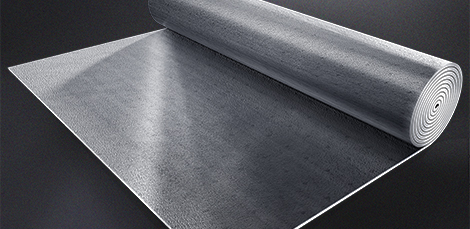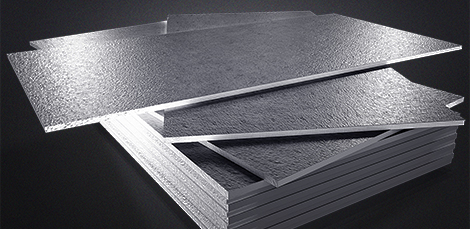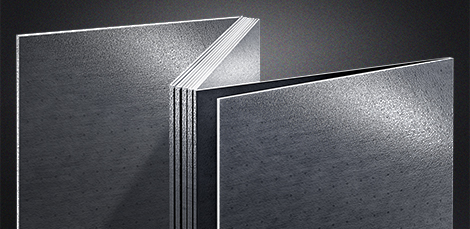Green Building
"GREEN" Pre-Engineered Steel Buildings
"Green" Steel Construction in the 21st Century Pre-engineered steel buildings have seen substantial growth in popularity over the past several years. Steel is 100% recyclable and is the most recycled material in the world. Thus, each ton of recycled steel saves 2,500 pounds of iron ore and approximately 1,000 pounds of coal. Most steel utilized in the construction of steel buildings consists of 70% recycled content - in fact, the Green Building Resource Guide gives steel framing its highest 5 icon rating making it a true "green" product.Steel Buildings and Energy Conservation
Steel building enclosure issues are perhaps the most common and least understood construction problem.
Properly insulated, steel construction can save natural resources, energy and money. Unfortunately, steel is 300 times more thermally conductive than wood resulting in short circuit thermal bridging through steel framing members. With improved insulation products, this short coming can be overcome. Today, because of public concerns regarding environmental issues as well as ever increasing energy costs, studies show that consumers have become willing and prepared to ensure their steel buildings are energy-efficient.Steel Construction and Thermal 3Ht Insulation
New Energy Requirements
The American Society of Heating, Refrigerating, and Air Conditioning Engineers (ASHRAE) has increased the minimum required prescriptive R-value for roof and wall insulation levels in Standard 90.1. The revised standard establishes criteria for metal building walls and roofs defined by heating and cooling degree- days.The goal is to describe how insulation systems perform when installed in "real world" steel buildings. Unfortunately, "real world" conditions are complicated. Interior and exterior temperatures are seldom consistent enough to permit accurate heat flow measurements. The effects of radiant heat gain and loss, air infiltration, moisture, and thermal bridging (a result of compression of insulation over metal purlins and girts) and occupancy levels complicate the situation even further.
It has been shown that in most climate zones, fiberglass batt insulation in metal walls cannot meet the new prescriptive requirements. In steel buildings the effectiveness of cavity insulation is reduced by up to 65%.
In order to achieve higher levels of energy efficiency, building projects are encouraged to comply with the full requirements and establish an energy use target that is 25% lower than present conventionally constructed steel buildings. Natural Resources Canada is considering an even more stringent target of 50% below ASHRAE 90.1 requirements.
Studies conducted by Independent Accredited Testing Laboratories, Natural Resources Canada (NRC) and Oakridge National Laboratory, US Department of Energy (ORNL), etc. prove there is much more to an efficient building system than the R-value of an insulation product.
- According to NRC and ORNL air infiltration accounts for as much as 40% of energy lost in most buildings.
- NRC states "Between 50 and 70% of the effective thermal resistance of porous insulation is lost if the system allows vapor transfer from one side of the cavity to the other."
- ORNL states "The market focus on clear-wall cavity R-value is misleading and is inhibiting the market penetration of high-performance wall systems into the residential construction industry."
- The National Institute of Standards and Technology (NIST) estimates effective air barrier systems could prevent as much as 83% of air leakage. This reduction could result in potential savings of almost 40% of gas and 25% of electrical consumption.
What is Thermal 3Ht Insulation?
Thermal 3Ht Insulation is a unique blend of Expanded Polystyrene (EPS) insulation with reflective metalized polypropylene facers. In one cost effective, flexible and easy to install product, Thermal 3Ht Insulation is an air barrier, a vapor retarder, a radiant barrier and an insulator. Thermal 3Ht Insulation on its own and combined with fiberglass insulation has been tested by Architectural Testing Inc. (ATI) an independent accredited laboratory in the USA and Canada. In steel wall assemblies, ASTM testing shows ½" Thermal 3Ht Insulation combined with R-19 fiberglass insulation improved the R-value of the wall system by over 100%. Thermal 3Ht Insulation reduces thermal bridging through steel framing members and is capable of moving the dew point from within the wall cavity to outside the wall….where it belongs. Thermal 3Ht Insulation is UL and Energy Star approved, is recognized by the US GREEN Building Council (USGBC) and qualifies for LEED points. Compared to typical insulation systems, Thermal 3Ht Insulation combined with fiberglass insulation, becomes both an extremely efficient and cost effective insulation system for pre-engineered steel buildings.
Return on Investment….GREEN vs. Conventional
It will always be challenging to determine the pay back or return on investment when comparing a "green" building to a conventional building. However, recent studies have shown energy efficient GREEN buildings have 13.5 percent higher market values, 5.9 percent higher net incomes per square foot, 4.8 percent higher rents and 1 percent higher occupancy rates. Green buildings are as much as 40 percent more efficient than conventional buildings resulting in significantly lower utility costs. As well, their air quality is superior, providing a healthier and more comfortable environment for occupants.
So, when it comes to making a decision about improving the market value, efficiency, conservation of energy and comfort of your steel building, the benefits of insulating with Thermal 3Ht Insulation are undeniable.



